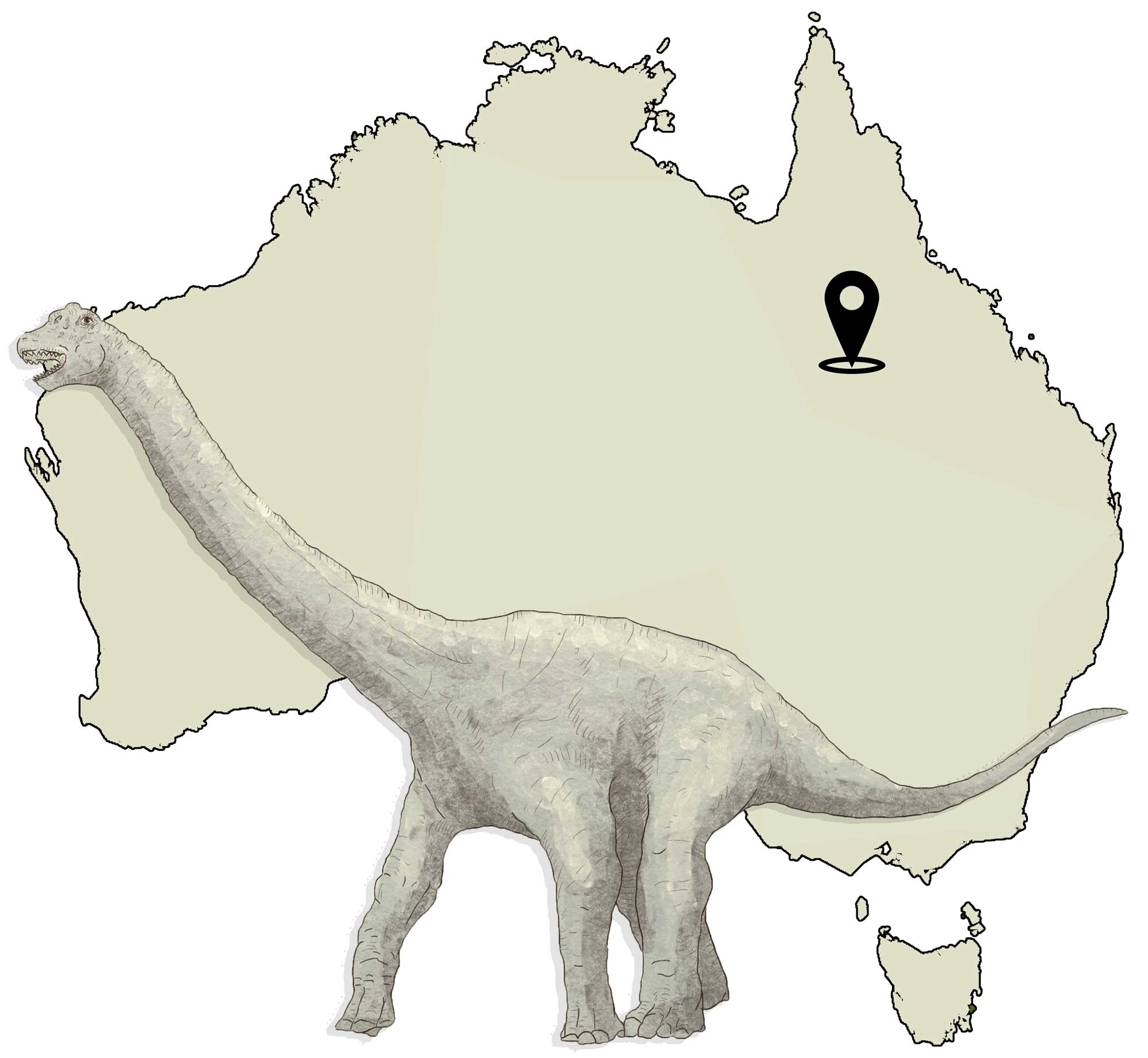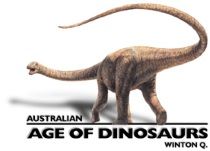Wintonotitan wattsi
 Pronunciation
Pronunciation
Win-ton-oh-tie-tan watts-eye
Meaning
[Keith] Watts’ (the landowner who discovered and donated the fossils) Winton (town near the discovery site) titan (Greek for giant)
Period
Middle Cretaceous (100–95 Mya)
Discovery and publication
Found on Elderslie station (near Winton), Queensland, in 1974, by the owner Keith Watts. He found the specimens and alerted the Queensland Museum to the discovery. Dr Mary Wade and Andrew Elliot collected the specimen later that year, and Watts donated the specimen to the Queensland Museum. In 1981 Walter Coombs, Jr. and Ralph Molnar described the partial skeleton as a new specimen of Austrosaurus (a dinosaur named in 1933 on the basis of a few vertebrae found near Richmond).
The site was not revisited by palaeontologists until 2004, when David Elliott was invited to look at several sites on the station. It was soon realised that one of the sites found by Ian and Sandra Muir (the latter being Keith Watts’ daughter) might actually have been one of those found back in the 1970s. In 2005 surface material was collected from the site, and some of the fragments were found to click back into place on to pieces excavated during the 1970s.
In 2006 the Australian Age of Dinosaurs Museum returned to the site again and conducted a larger-scale excavation, which led to the discovery of more bones deeper within the site. The newly augmented specimen was reassessed, and it became clear that it did not belong to Austrosaurus. In 2009, Dr. Scott Hocknull and others named this specimen Wintonotitan wattsi; it had been affectionately named “Clancy” by the Museum. In 2024 Samantha Beeston and colleagues completed a reappraisal of the Winton Formation sauropods. Their study revealed that Wintonotitan and Diamantinasaurus share few differences, yet Wintonotitan remains classified as a valid genus.
Description
“Clancy”, the Wintonotitan type specimen, comprises several vertebrae (mostly from the tail), rib fragments, chevrons (which hang below the tail vertebrae and enclose a blood vessel running along the length of the tail), partial bones from the forelimbs, and shoulder and hip bones. It is a fairly complete specimen by Australian standards, but it is not very well preserved; this has made it very difficult to work out where Wintonotitan sits on the sauropod family tree. It belongs to the group of sauropods known as Diamantinasauria, along with Australian sauropods Savannasaurus and Diamantinasaurus, as well as the South American sauropod Sarmientosaurus. Recent research by Beeston et al (2024) indicates that Diamantinasaurian sauropods are not true titanosaurs but belong to a group of titanosauriforms called somphospondylans, named for the internal texture of their vertebrae in the front of the hips.
Although some of the Wintonotitan specimens were suggested to be osteoderms (armour plates) in 2011, it has since been demonstrated that this was incorrect. The bones identified as “osteoderms” are in fact fragments of vertebra.
Wintonotitan was 16–17m long, 3.5m tall at the shoulder, and would have weighed approximately 20 tonnes. It was somewhat more lightly built than Diamantinasaurus.
